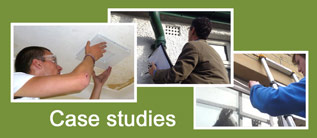

Our damp and condensation solutions
Nobody wants to live in a home with condensation and mould, and simply opening the windows is rarely the answer.
The trick is to find the sweet spot that gives your home the ventilation it needs without making it cold and draughty - enough, but not too much. In our experience a combination of systems working together often gives the best results.
Here are some of our solutions that we find to be very effective at tackling damp, condensation and mould.
Positive Input Ventilation
The best way to avoid condensation and mould is to introduce a gentle background flow of air into your home. A Positive input ventilation or PIV is designed to just this.
The PIV is usually installed in the loft of a house. It should be virtually silent in operation and be configured to provide the smallest flow of air that resolve the condensation problem in your home.
For homes without a loft there is a version which is wall mounted - typically these are used in flats. Where possible we favour the loft mounted version as they tend to be quieter in operation and can be installed to deliver fresh air to the centre of the home.
In our experience a PIV will produce the best results when used used as a package of one of more of the other measures described below.
Trickle vents
Trickle vents are slim horizontal vents fitted in the top of windows. If you are reading this it's a fair bet that they are not installed in the windows in your home.
We can 'retro-fit' trickle vents to most windows, but of course if you are having your windows changed you should always ask for trickle vents to be included. Unfortunately most of our customers tell us that this they were unaware that this was an option, or even that they were dissuaded from having them fitted in the first place.
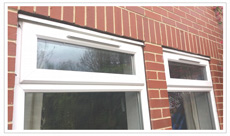
There is no down-side to having trickle vents fitted when your windows are changed apart from that they add marginally to the cost of new windows. But obviously they are easy to fit in the factory, so you should haggle with your double glazing representative to get them included at a good price - or at no extra cost.
A flap on the inside of the vent allows it to be shut, so on a windy winter's evening you might decide to close the vent. But since they are only designed to let a small amount of air in we find that most customers choose to leave them open all the time.
Trickle vents on multiple windows will help alleviate condensation problems and are very effective when used in conjunction with positive input ventilation.
Anti-condensation loft vents
The ideal loft should be well insulated and well ventilated. Ideally the insulation should be on the base of the loft (in other words over the bedroom ceilings).
If your home suffers from excess humidity then this tends to find its way into the loft. The warm moist air rises up past the light fittings, cracks in the ceiling, the loft hatch, and any other gaps and then condenses on the colder surfaces in the loft.
When the roof timbers become excessively damp then they will start to rot. Whilst this is rarely an immediate problem for most home-owners you might want to consider whether your loft is adequately ventilated.
The addition of a layer of loft insulation can sometimes be a problem if it extends into the corners of the loft - since many roofs have ventilation at the 'soffits', and so choking off this supply of air prevents the moist air in the loft from escaping. In fact this can have a knock-on effect in the rest of the house. We have seen situations where the addition of loft insulation has caused mould to appear in the rooms below.
If you then choose to have a positive input ventilation system (PIV) installed in the loft - which relies on drawing air from the loft into the house - then this cannot work efficiently if the loft is not well ventilated.
As part of our survey prior to fitting a PIV we check the moisture content of the roof timbers - if it exceeds 20% WME ('wood moisture equivalent' - the amount of water content) then we will recommend the installation of roof vents since this is the threshold level above which wood rot can start.
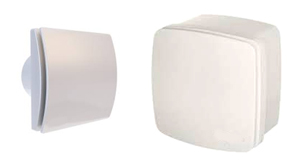
Humidity tracking extract fans
In our experience after bath or shower has been used, it takes several hours for the room itself to dry out. So a typical extract fan that runs for a few minutes after the light has been switched off is not very effective.
A fan that changes its speed in response to the humidity it detects, and that has sufficient power, will give the best results. We also believe that the electrical power to your extract fan should not be fed by the lighting circuit.
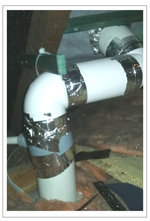
You don't necessarily want the fan to come on if you use the loo in the middle of the night, and you may want the fan to come on when the light isn't on - taking a shower during the day for example.
Fan exhaust ducting
If your fan is mounted on the ceiling then it's worth checking the ducting to see how the moist air is expelled to the outside. And in fact this is one of the biggest problems with see with bathroom fan installations. A fan duct that snakes around the loft using uninsulated flexible ducting before venting the air will make a fan much less effective.
Fan ducting should be:
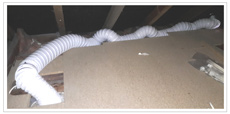
- As short as possible.
- Rigid rather than flexible.
- Insulated.
- Connected to an unimpeded vent to the outside.
Trimming doors
Dehumidifiers tend to be switched on during the day, but are off overnight. But humidity can be a problem overnight and less so during the day. At night all - or most of the family are home.
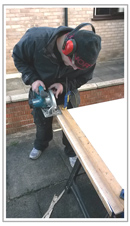
In the morning windows are opened, dehumidifiers and central heating are switched on. Unfortunately it is during night that the damage is done.
Wall vents
We find that most homes that were built with vents in bedrooms for example have had them covered up (usually plastered over) by home-owners. We understand why - the wrong type of wall vent installed in the wrong position can make rooms cold on a windy day and are of little benefit on a still day.
However we occasionally suggest installing wall vents. In some situations the humble wall vent can be an effective addition to a ventilation solution.
Next steps
As a starting point to solving your home's condensation problems you can use our damp home diagnoser to help you understand the reasons for damp in your home. Or request a free home survey for expert advice, a report and quotation.
High humidity + inadequate ventilation
= damp, condensation, mould

UK government advises:

